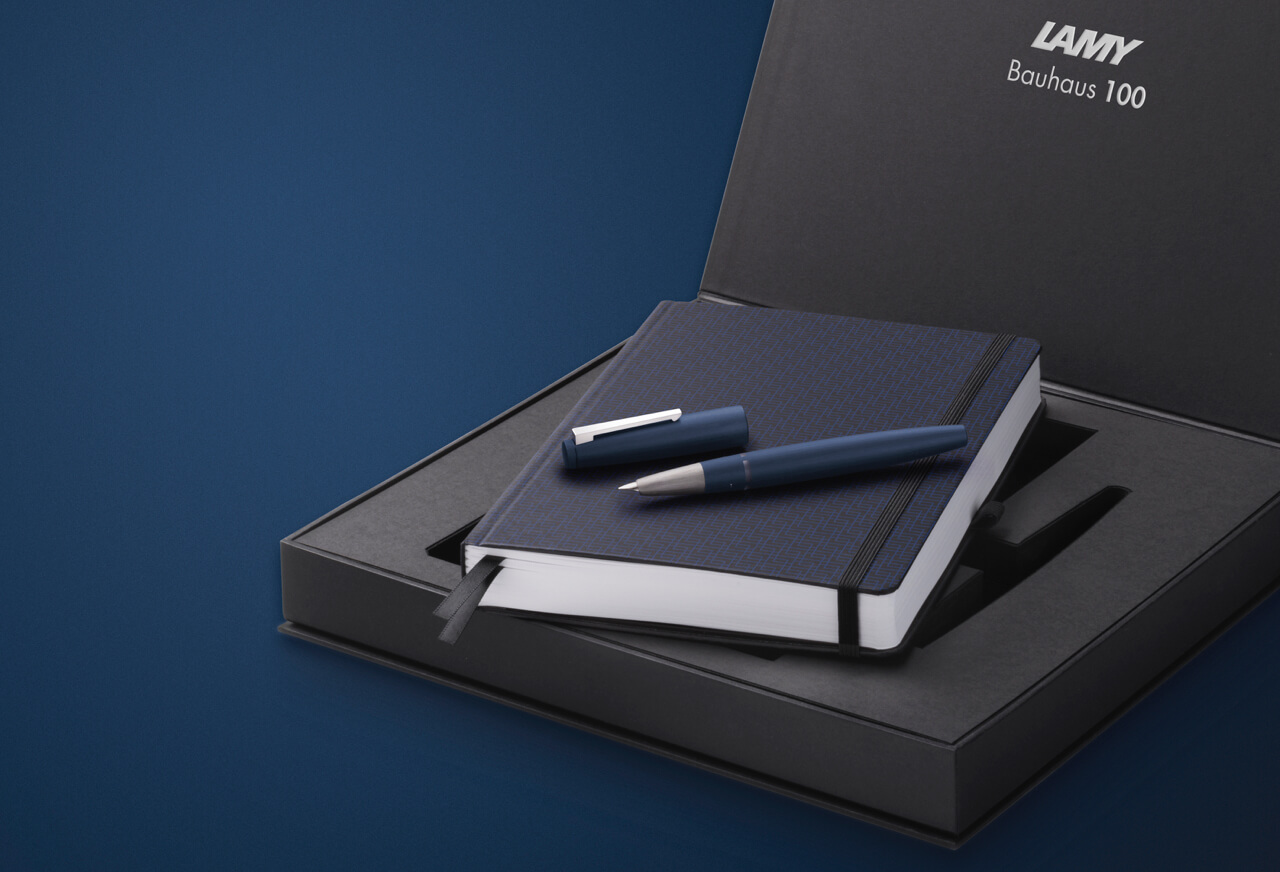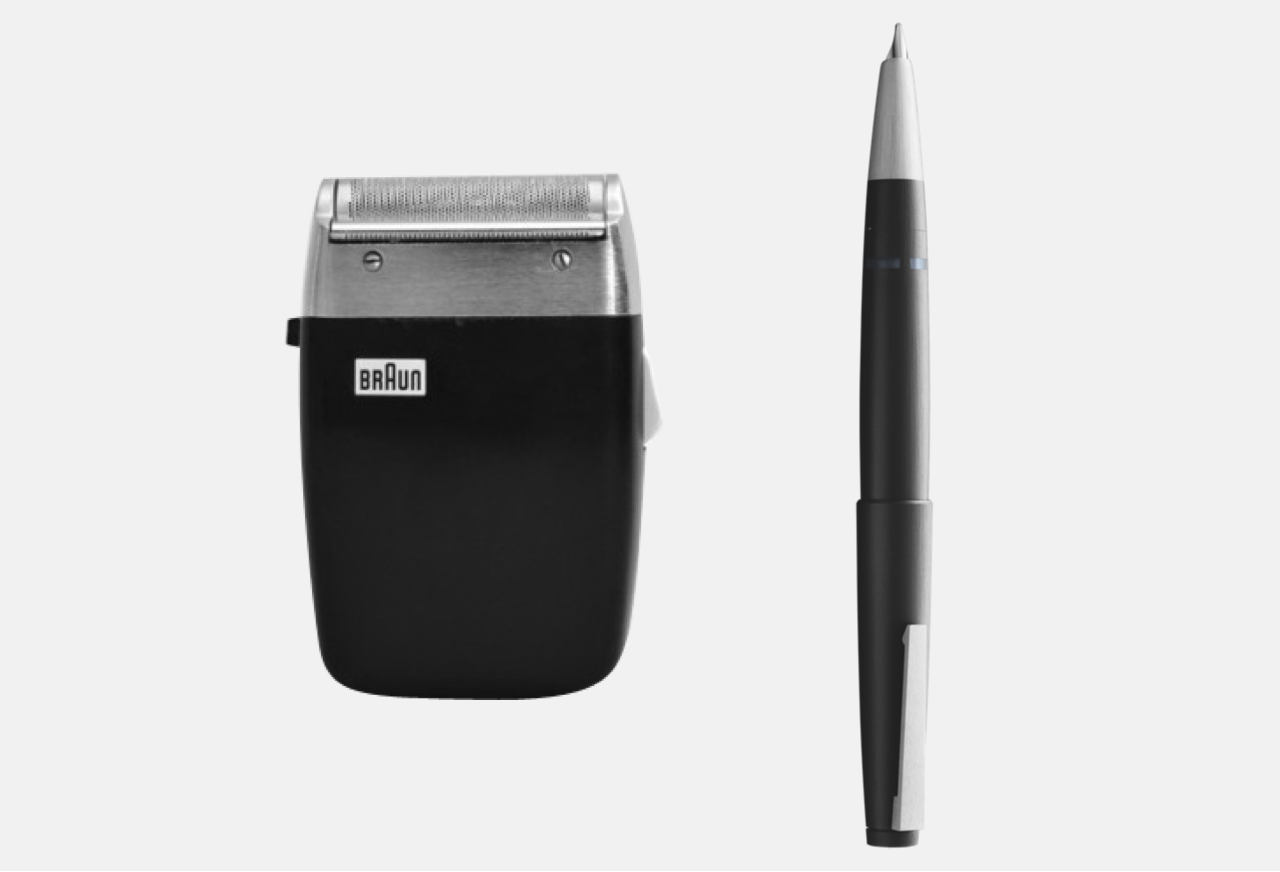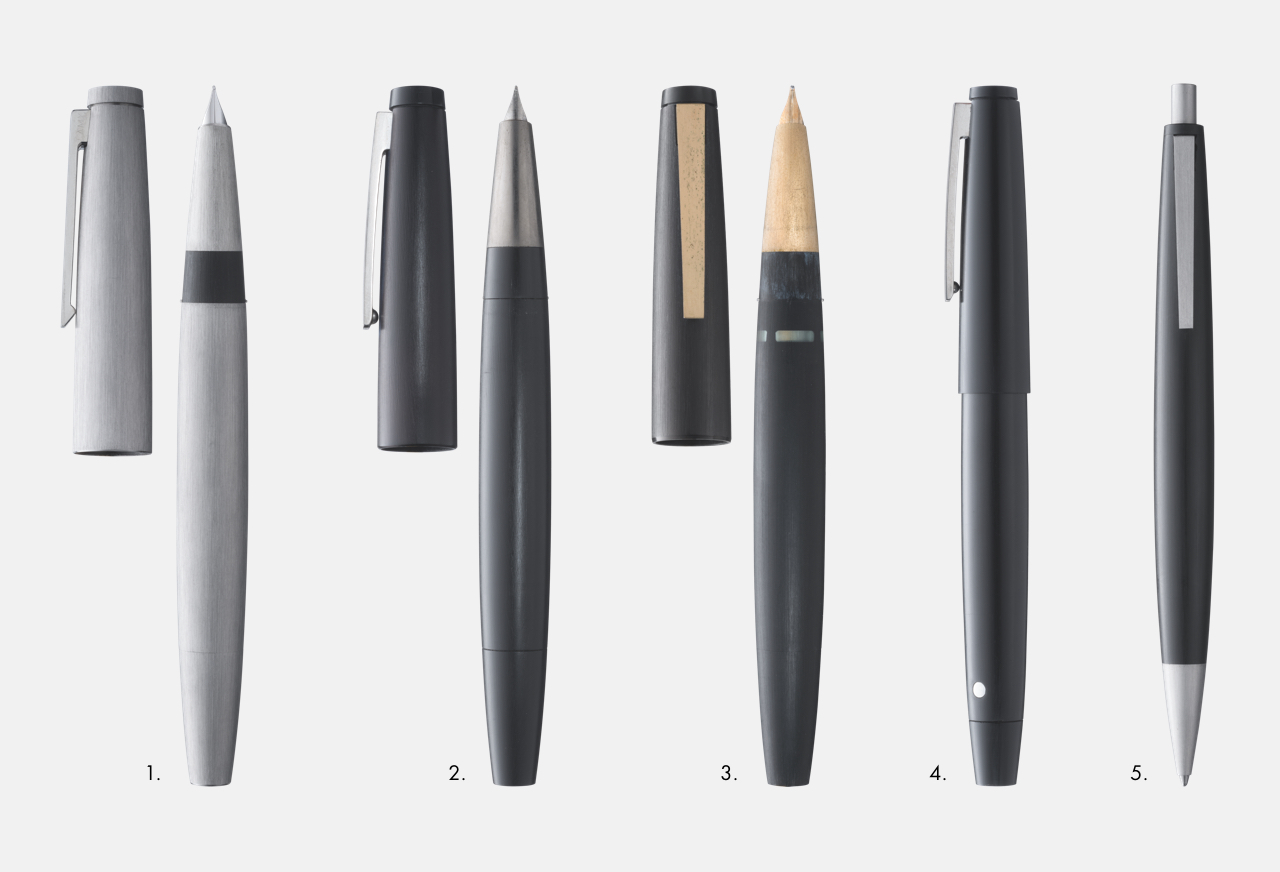100 years of Bauhaus
LAMY 2000 blue Bauhaus – Limited edition
Exclusive and only for this 2019 Bauhaus anniversary year: Lamy is celebrating a unique combination of accomplished design, functionality and quality with this one-of-a-kind special edition. The elegant deep blue of the LAMY 2000 blue fountain pen’s brushed polycarbonate body is in perfect harmony with the objectively cool optics of the stainless steel grip. This anniversary edition is limited to a total of 1,919 individually numbered fountain pens.
Available from September 2019

Exclusive set with anniversary notebook
This fountain pen is presented in a sophisticated gift box including notebook – an exclusive set for connoisseurs and only available in this anniversary year. The cover and all of the notebook’s pages as well as the folder in the rear cover are made of high-quality Gmund paper from the Bauhaus collection. The pages are white and have a grammage of 120 g/m2. They are divided into different sections
with alternating soft grey ruling. The pen can be attached to the book using the pen loop. The folder at the rear of the book can be used for the storage of small keepsakes. The notebook stays securely shut thanks to its looping elastic band. Two different-coloured textile ribbons are used as practical bookmarks.
€ 350,-

- Fountain pen set with platinum-refined 14 ct. gold nib
- Nib width: EF

- Piston fountain pen made of polycarbonate and stainless steel, brushed
- Polished high gloss massive clip

- Includes DIN A5 notebook
- 240 pages
- Gmund Bauhaus paper
LAMY 2000 History
In the early 1960s, the then Marketing Manager, Dr. Manfred Lamy, was looking for a new long-term strategy that could help establish the LAMY brand’s market position. Design proved to be the niche he was looking for: a great admirer of the Bauhaus, he studied the various ranges of products created by brands such as Braun and Olivetti, who were then developing groundbreaking approaches to industrial design.
Photo Credit: Uli Maier
So it was almost as though fate intervened when shortly afterwards he met a designer formerly employed by Braun, Gerd A. Müller. They soon came up with a joint project: to design a fountain pen in the Bauhaus tradition. The LAMY 2000 was the first Lamy writing instrument to have been produced in collaboration with an outside designer. It was groundbreaking not only in terms of its impact upon the brand’s future design idiom, but also for the way the partnership with Gerd A. Müller forged a design process that put huge value on interpersonal communication.

Borrowing from the visual aesthetic of Braun’s Sixtant electric shaver, the LAMY 2000 made use of a combination of stainless steel and the then-new material Makrolon.
Photo Credit: Archiv Museum Angewandte Kunst Frankfurt
Featuring a minimalist design that Müller had developed by following strictly functionalist criteria, the LAMY 2000 signalled a conscious break from the classic and traditional style of pens that dominated the market in the 1960s. It came to define an aesthetic of restraint, which still to this day informs the design of all Lamy products. As a trained carpenter whose skills were honed while working at Braun, Müller was immediately able to contribute his own unique style of work. Rather than design sketches, he preferred wood and plaster models, which he himself made and displayed at the Lamy factory. The LAMY 2000 was no exception: the initial design already closely predicted the form the product would eventually take, although little attention was at this stage paid to its technical feasibility.
This brought Müller into dialogue with Lamy’s design engineers over the course of regular meetings, until – after an astonishingly brief period of development – they managed to turn their creative vision into reality. Inspired by the look of the Braun Sixtant razor, Dr. Lamy and Gerd A. Müller decided to make the LAMY 2000 using a combination of stainless steel and Makrolon. This relatively new material was in vogue at the time, although it was difficult to process. To create the desired matt finish without any visible joins between the two materials, Lamy first had to come up with completely new procedures and, having done so, set new benchmarks in both the manufacturing and processing stages.

Fig. 1
Prototype: LAMY 2000 fountain pen; stainless steel/polycarbonate; handmade
Fig. 2
Master model: LAMY 2000 fountain pen; Bakelite, nickel silver; design study: spring-loaded clip, round clipdrop, without ink-level window, steel nib
Fig. 3
Prototype: LAMY 2000 fountain pen; materialstudy: Makrolon, gold-plated stainless steel; non-coated gold nib; round clipdrop
Fig. 4
Master model: LAMY 2000 fountain pen; Bakelite, nickel silver; design study: spring-loaded clip, round clipdrop, without ink-level window, unlocking mechanism for piston-operated filling system, steel nib
Fig. 5
Non-functional prototype: LAMY 2000 ballpoint pen; stainless steel body; round clipdrop


